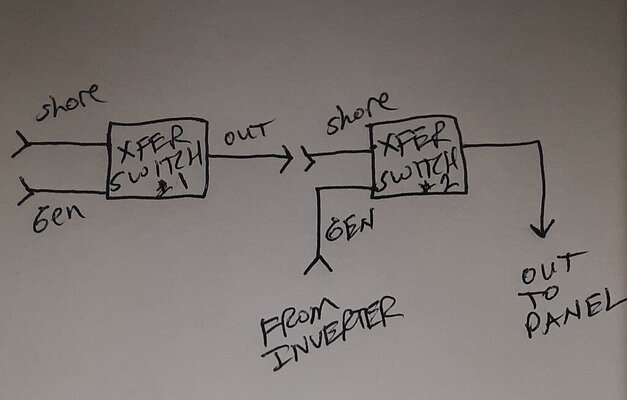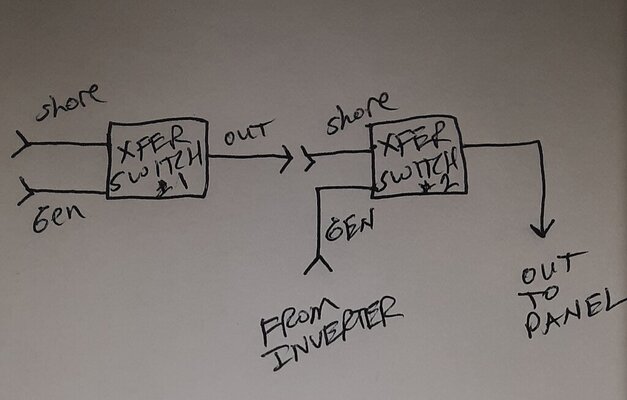dktool
Well-known member
- Joined
- Apr 3, 2015
- Posts
- 273
Does anyone know of a source for a stand alone 3 way transfer switch ?
I currently have a 2 way (shore / generator) I am adding a 2000 watt inverter, if no 3 way is available I'll add a second 2 way down stream of the first.
I want the inverter to be a seamless extra power source when needed with it powering all outlets as currently wired.
I will add a N.C. relay that will disconnect the battery charger when the inverter is on.
I currently have a 2 way (shore / generator) I am adding a 2000 watt inverter, if no 3 way is available I'll add a second 2 way down stream of the first.
I want the inverter to be a seamless extra power source when needed with it powering all outlets as currently wired.
I will add a N.C. relay that will disconnect the battery charger when the inverter is on.



